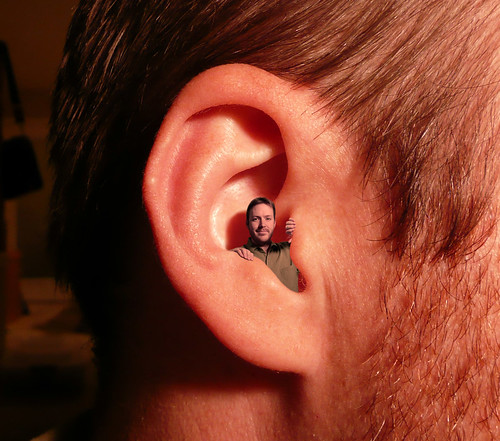What Really Happens When We Listen To A Lecture
The ubiquitous lecture.
On any given day thousands of lectures occur across the globe. People gather in arenas, board rooms, city halls, colleges and universities, conferences, conference rooms, churches, general sessions, libraries, meeting rooms, schools and theaters to hear lectures.
It is the most common method used when teaching adults. Unfortunately, it is also ineffective for learning.
What Happens When We Listen To A Lecture
Researchers Eillis and Young (1988) studied the brain’s pathways of stimulation. They compared stroke and brain-damaged patients to healthy people. They uncovered our brain’s process and activities that must occur when listening to a lecture.
Here are the chronological sequences that happen in our brain when we listen to a lecture.
1. Auditory Analysis of Sense Data
Listeners must hear the noise the lecturer makes, hold it in memory long enough to distinguish from other noises, analyze it into individual speech phonemes (sounds) and group phonemes together to make syllables. The listener must also ignore variations in pitch, speed and accent. (Some can’t get past the pitch, speed or accent of the lecturer to ever hear the phonemes.)
2. Word Recognition
After auditory analysis, the syllables must be matched with our brain’s auditory store of words. Some words are unrecognizable because they may be new or unfamiliar technical terms. If the listener tries to write the new words, they must pay attention to the individual phonemes and associate them with graphic shapes (uppercase and lowercase letters, numbers, visual symbols).
3. Contextual Factors
Some syllables are identified because of their context in the lecture. The short term memory of the auditory lecturer’s words lasts only for up to two seconds before the brain’s impulses of those words decay. This explains why people remember one-liners and buzz phrases. If the point can be made in less than two-seconds, it may stick.
4. Articulatory Loop
Listeners’ subvocal speech, moving their lips and speech muscles without making a sound, can extend auditory verbal memory for a few seconds. Some “mouth the words” when listening to a lecture which may actually help in short-term memory retention.
5. Constructing Meaning Through Encoding
The information received must be associated with, discriminated against or chunked with other information. If the information is to be encoded in short-term memory and hopefully retained within long-term memory, the meaning of the words and the link to our own conceptual map must be made. When someone takes notes, the likelihood for encoding increases. If a listener is not given time to construct meaning and encode it, understanding is lost.
6. Thinking
The recognition and thought about what the lecturer is saying interferes with matching the next group of words uttered by the lecturer. Listeners face divided attention if they try to think about what the lecturer is saying and try to make meaning of those words versus listening to new information the lecturer is saying.
7. Expressing
Once listeners know the meaning of what the lecturer is saying, they search their minds for ways to express it. They may do that through speech or writing. Often, lecturers don’t give listeners enough time to express or record their thoughts. So the information is forgotten.
8. Processing
Some lectures allow listeners to attain surface knowledge of the topic. The learning is shallow and the retention is low. When lectures allow listeners time to construct meaning, encode the information, think about it and express it, they foster deep learning. Processing the information on a deeper lever means the listener remembers more.
Learning From A Lecture Is Complex And Fragile
As you can see, the processes involved in listening to a lecture are complex and fragile. In addition to these chronological steps that occur, there are a host of other factors that can aid memory or cause one to forget. Typically, there are more factors that cause us to forget.
Regardless, listeners are under extreme pressure to either listen to the lecturer’s words or try to make meaning of them. They cannot do both at the same time. This is why lectures are poor for learning.
Why are we enamored with the lecture when it ineffective for learning and retention? Why do we depend so much on lectures as an education model?



[…] velvetchainsaw.com – Today, 3:00 AM […]
As for the lecturer (or teacher), one of the best ways to get your audience to remember to the information you told them is to find a way for them to transfer your information from short-term memory into long-term memory. One of the greatest ways to do this is by establishing some kind of emotional response to the information you have given.
Find a way to have them respond emotionally to your lecture and you will strengthen the chances of long-term memorization.
[…] classroom. On “Midcourse Corrections,” Jeff Hurt summarizes research by Ellis and Young uncovering the exhausting process the brain goes through while listening to a lecture, which prompted them to question lecture-based […]